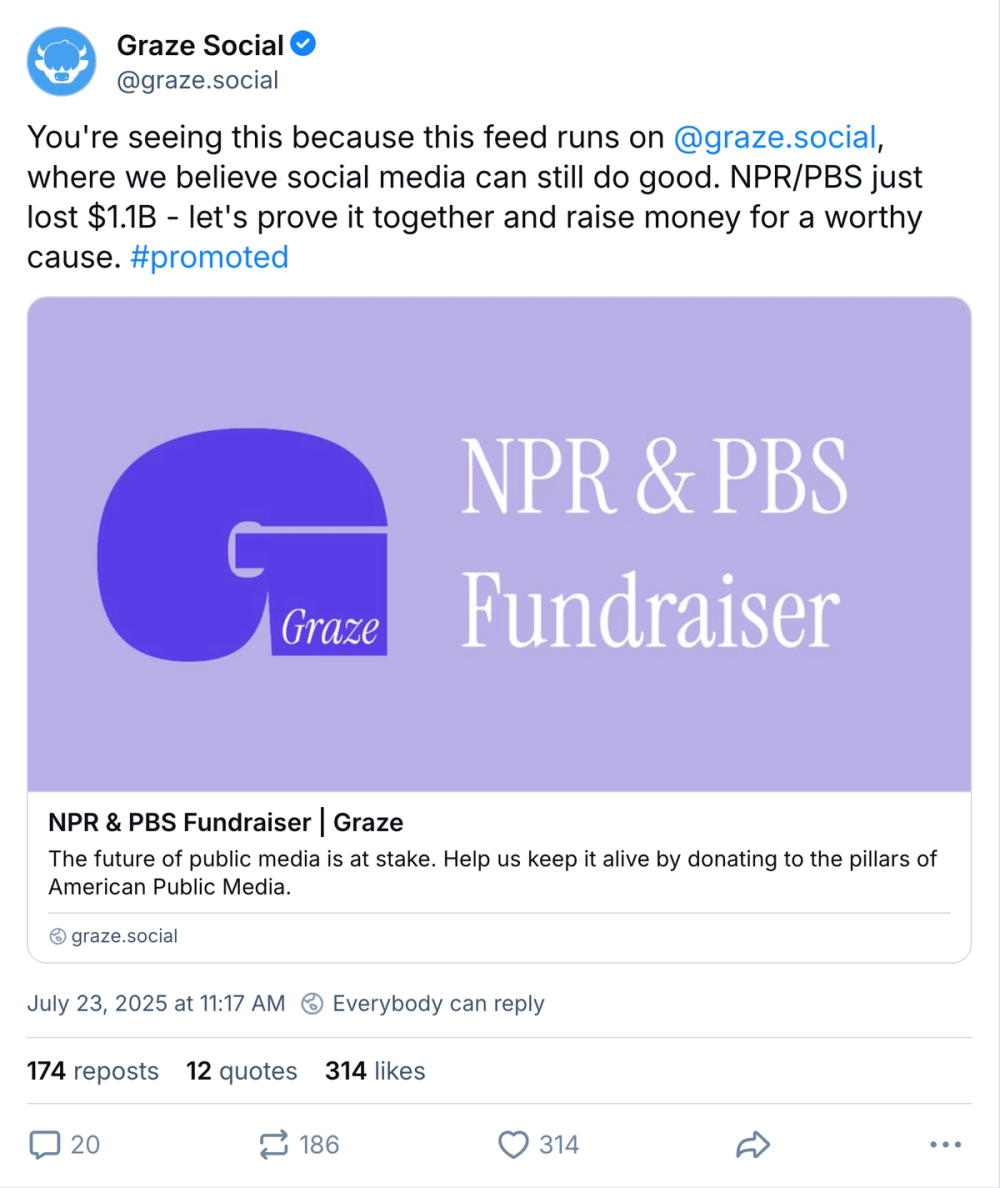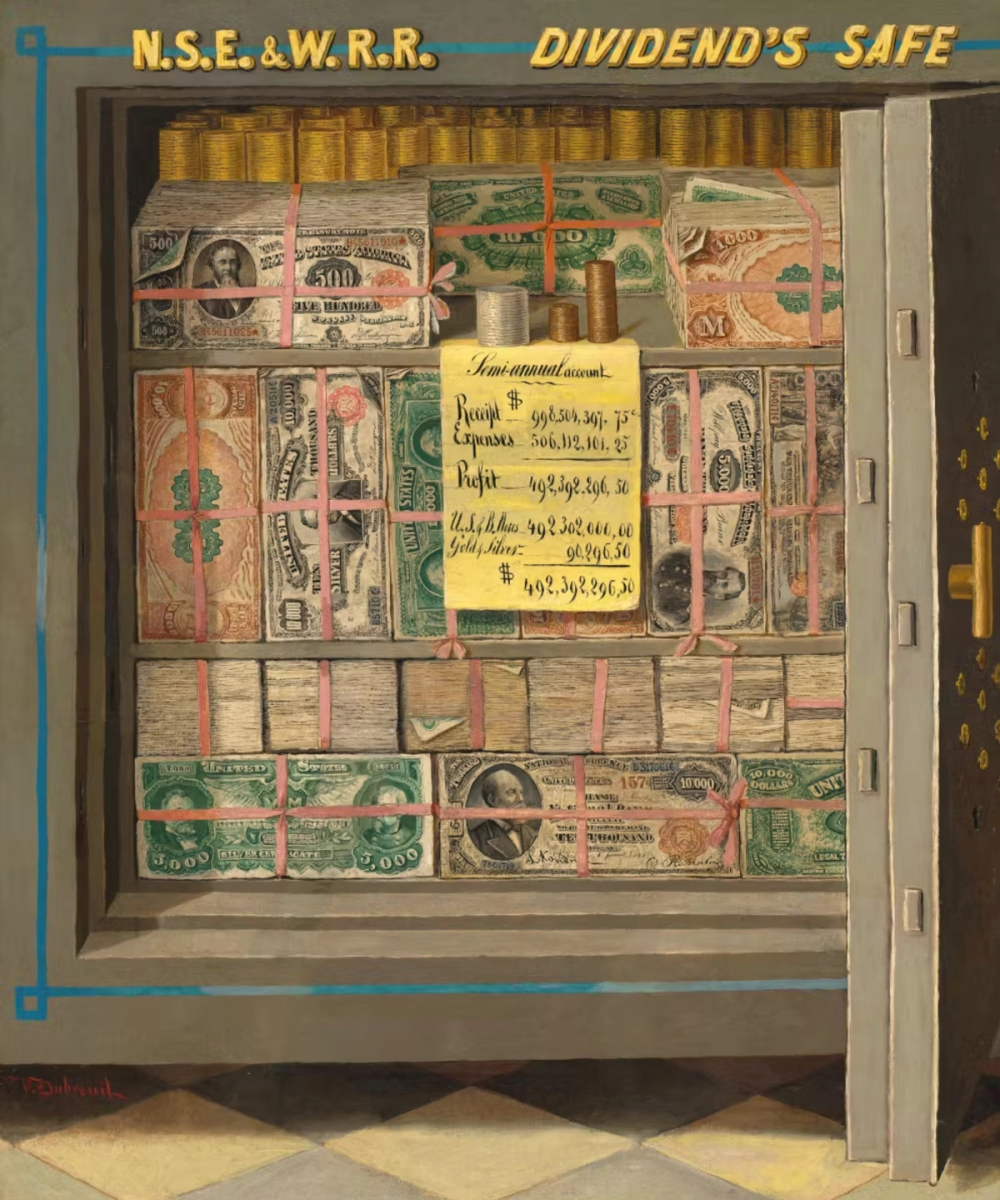How Graze Sponsored Market Blew Away Benchmarks While Fundraising for Public Media
The complete elimination of federal funding for public broadcasting in July 2025 created an unprecedented crisis for NPR and PBS, with Congress clawing back $1.1 billion over two fiscal years [1]. Against this backdrop, we decided to help out while also learning more about the future of sponsored content on ATProto.

The Results
We ran a small sponsored content test, and produced remarkable results:
Ad spend: $400
Donations generated: $671.24 Return on ad spend (ROAS): 168%Cost per donation: $30.76
Engagement: 174 reposts, 12 quote posts, 20 comments, 314 likesCost per engagement (CPA): $0.77How This Compares to Industry Standards
The Graze.social NPR/PBS donation campaign's 168% ROAS is exceptional performance in the nonprofit digital advertising landscape. Industry benchmarks from M+R show that typical Facebook/Meta campaigns achieve only 48% return on ad spend [3].
The breakdown:
Facebook average cost per donation: $106
Graze cost per donation: $30.76That’s not all, though - our post received a ton of attention for the spend with a CPA of just $0.77 [4]. In short, our dollars went three times further on Bluesky than they would on any other social platform. We’re not the only ones seeing this, of course - Matt Karolian of the Boston Globe reported similar findings last winter, for example [5]. It may be that, in fact, Bluesky is the best place for business these days.
Why These Results Matter
These results become even more impressive when you consider that it occurred on a platform without native advertising infrastructure, using our year-old third-party solution with zero personalization or targeting. Traditional platforms rely on extensive user data and sophisticated targeting algorithms, with decades of optimization and massive scale – yet Graze matched (or exceeded) their performance right out of the gate.
The Creator-First Revolution
Beyond delivering great return on investment, Graze.social's business model is fundamentally restructuring the economics of social media advertising in favor of content creators. On legacy platforms, every dollar spent goes to the coffers of capricious billionaires - on Graze, it goes to the people.
Bluesky’s custom feeds architecture means that any ordinary person can create an algorithm, and anyone else who likes the curation they’re providing can subscribe and use it as their default.
Here’s how it works: When you purchase a sponsored placement on Graze, 70% of the revenue goes directly to the feed operator, not some big corporation. This allows ordinary people to make a living providing great content to their communities, establish relationships with their readers, and extend invitations to advertisers to gain access to their community.
When advertisers work with these feed operators, that reader/feed operator trust transfers to sponsors. Sponsored posts don’t just disrupt the flow of the content, they make it possible in the first place, and readers are getting the signal.
What This Means for the Future
The Graze.social NPR/PBS donation campaign proves that the Bluesky advertising ecosystem isn't just viable – it's already outperforming established platforms.
Graze’s theory is that a world of user designed algorithms is better for everyone. When creators are fairly compensated, and users are given algorithmic choice, they don’t just have a better time online – they create a fundamentally much better business opportunity.
This is just the beginning, and we’re excited about what comes next.
[2] https://www.npr.org/2025/08/01/nx-s1-5489808/cpb-shut-down-public-broadcasting-trump
[3] https://d30s75h9mppx92.cloudfront.net/mr-benchmarks-25/files/2025+M%2BR+Benchmarks.pdf
[4] https://bsky.app/profile/graze.social/post/3luncu4p2j326
[5] http://bsky.app/profile/mkarolian.bsky.social/post/3lbunm54agc2k
[6] https://www.graze.social/ads
Article Image via Public Domain Image Archive
